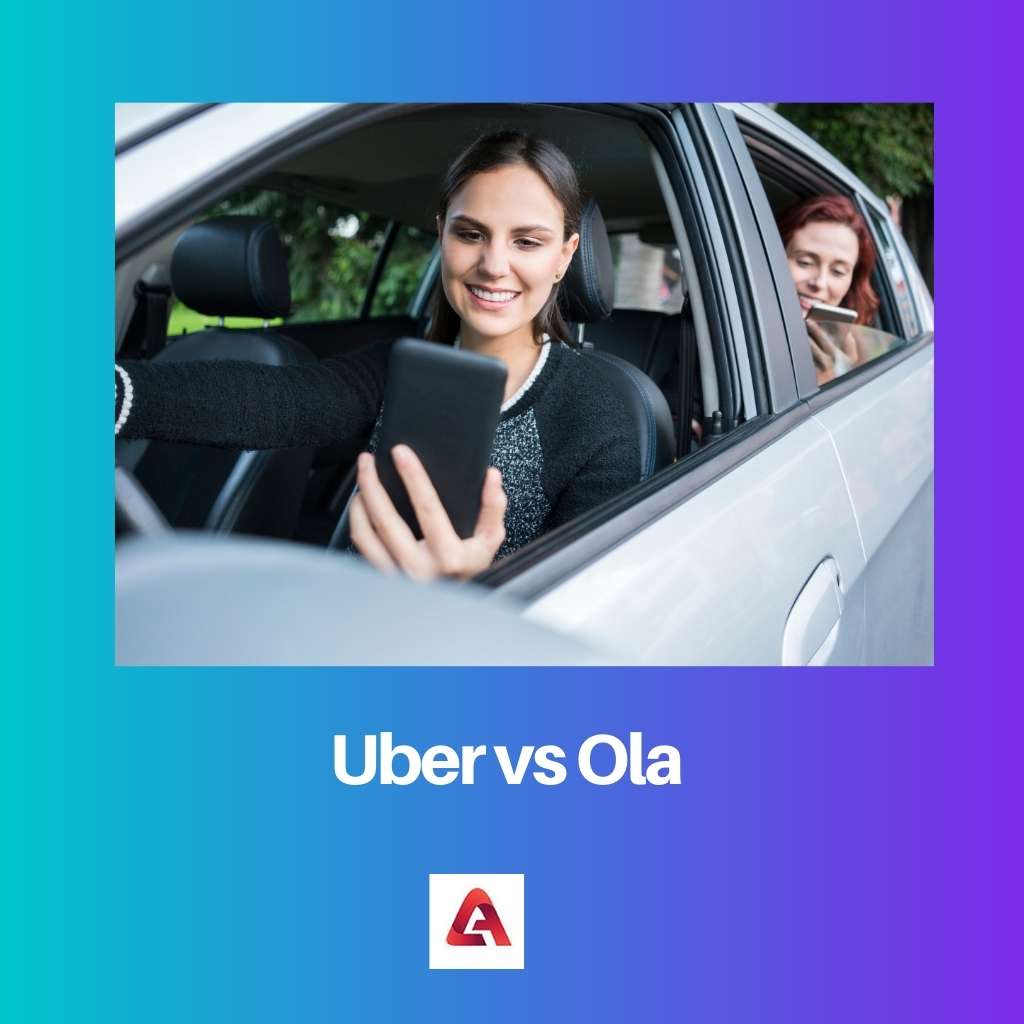In today’s time, for traveling from one place to another there are also several apps from which one can look for the transport vehicle and book it. This task can be done with ease from anywhere.
There are several instances like city mapper, Cabify, Transit, Zipcar, Lyft, and many more.
From the several transport service offered, there are some which are quite popular, and generally, most of the users use it like Uber and Ola.
Both of them offer a range of car services through which one can prefer as per their requirement. In this article, the chief aim is on differentiating you Uber and Ola.
Key Takeaways
- Uber operates in more countries than Ola, primarily serving the Indian market.
- Ola offers various transportation options, including auto-rickshaws, bikes, and cabs, while Uber mainly focuses on car rides.
- Ola has a local payment wallet system, whereas Uber uses an international payment gateway.
Uber vs Ola
The difference between Uber and Ola is the services offered by them. Freight transport, a vehicle for hire, courier, food delivery, and package delivery are the services offered by Uber. On the other hand, the services offered by Ola are a vehicle for hire, mobile payment, goods, digital wallets, and food delivery.

Through the Uber app, Uber links passengers with drivers. The company does offer lease or rental on cars through third partners such as Hertz, Get Around, and Fair.
The app namely, Uber Fleet is used to manage the driver squad. It also offers electric car and bicycle rental in some areas as well as a developmental project in autonomous driving.
Ola is the first Indian company of cab aggregator, which has made cab service’s availing a smooth experience. It is owned by Technologies Pvt. Ltd of ANI, which is formerly called Ola Cabs.
It bridges the gap between commuters and cab owners. Through Ola’s app, it allows people at a short notice to book cabs.
Comparison Table
| Parameters of Comparison | Uber | Ola |
|---|---|---|
| Type | Public | Private |
| Founded | March 2009 | December 2010 |
| Key people | Dara Khosrowshahi (CEO), Tony West (CLO), Ronald Sugar (chairman), and Nelson Chai (CFO) | Ankit Bhati (CTO) and Bhavish Aggarwal (CEO) |
| Headquarters | San Francisco, California, U.S. | Bangalore, Karnataka, India |
| Area served | 71 countries, over 10000 cities | India, Australia, the United Kingdom, and New Zealand |
What is Uber?
Uber Technologies, Inc. is known as Uber which is American mobility as a service provider. Through a partnership with ferry and Lime transport in partnership with operators at local level offers various services.
Across worldwide, it had approx 101 million monthly active users in 2021.
In advance, the fares are quoted to the customer but vary through a dynamic pricing model based on the local demand and supply at the time of booking.
In sharing economy, it had been so prominent that service industries’ commoditization using computing platforms was described as uberisation.
Like similar companies, this company also has been criticized for its driver’s treatment as independent and workers contractors, increase in traffic congestion, and disruption of taxicab businesses.
For ignoring local regulations and various unethical practices Uber has also been criticized.
Uber Works was launched by Uber in October 2019 to connect workers in need of temporary jobs with businesses. It was initially accessible only in Chicago and in December 2019, it expanded to Miami.
In May 2020, the services of Uber Works were shut down.

What is Ola?
Ola Cabs, which is styled as OLΛ is a ride-sharing company of Indian multinational. In other business verticals, it also operates consisting cloud kitchen, used car marketplace, and financial services.
In the company, a range of venture capitalists consisting of SoftBank has large stakes.
In March 2015, this company acquired a taxi service in Bangalore, namely TaxiForSure. June 2015 onwards, its users gained access to TFS cab through the Ola mobile application.
Later, for an undisclosed sum, it acquired Geotagg which is a company of trip planning applications.
Apart from Ola cab’s ride-hailing business, the holding company operates four subsidiaries, namely Ola Fleet, Ola Cars, Ola Floods, and Ola Financial Services.
Ola Electric which is an electric scooter manufacturing company, Ola owns a 6% stake in it as of September 2019.
Regarding the mobile app’s security, Ola cab’s technology face criticism. As of January 2020, canceling the ride attempted to automatically another ride booking.
Its refund policy is also criticized due to charging errors by technical glitches in Ola’s system.
Main Differences Uber and Ola
- To resolve several issues, one needs to have customer support in these times. Within the stipulated time, the user and driver’s issues resolve much faster in Uber. In contrast, the customer support services of Ola take a lot of time and are not that responsive in resolving the issues.
- In terms of explicitly showing the different cabs availability types. After the user has selected then only Uber shows the options availability types. Meanwhile, Ola shows the types of cabs available and also their approx time on the homepage to reach the user.
- In Uber, quality checks regularly are being made. Also, the quality maintaining level is very high. There are distinctive auditors which do car’s quality regular checks. Conversely, there is no need to go through these checks by Ola drivers.
- The kinds of cars that can be booked by Uber are SUVs, Sedans, premium cars, luxury sedans, and accessible vehicles. On the flip side, luxury sedans (Sydney only), SUVs, and sedans are the kinds of cars available for booking by Ola.
- The services offered by Uber are freight transport, a vehicle for hire, courier, food delivery, and package delivery. On the other hand, a vehicle for hire, mobile payment, goods, digital wallet, and food delivery are some of the services offered by Ola.
References
- https://heinonline.org/hol-cgi-bin/get_pdf.cgi?handle=hein.journals/davlr49§ion=39
- https://scholar.google.com/citations?view_op=search_authors&mauthors=ola&hl=en&oi=ao
